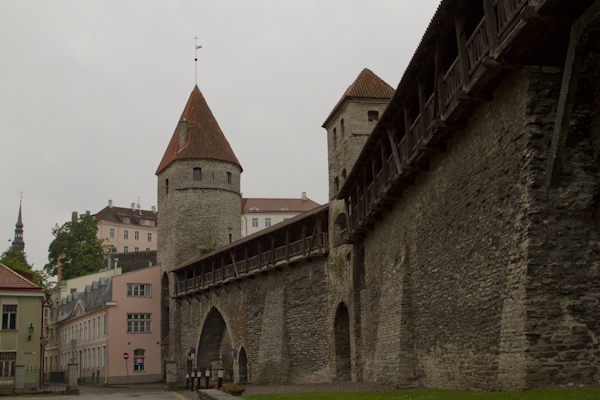
Tallinn was the last town on our Baltic route, and the third in a UNESCO “old cities” triple crown, alongside Vilnius and Riga.
The distinctive round towers with their orange cone-shaped roofs give Tallinn a character that sets it apart from the other two Baltic capitols. It’s a lot more polished, and very well restored.
But it somehow lacks the gritty atmosphere of Riga, or the homespun charm of Vilnius. Tallinn’s tourist operation is perhaps a little too slick, and everyone’s English just a little too good. But of course these things are nothing to complain about, because they make it a very easy place to visit.
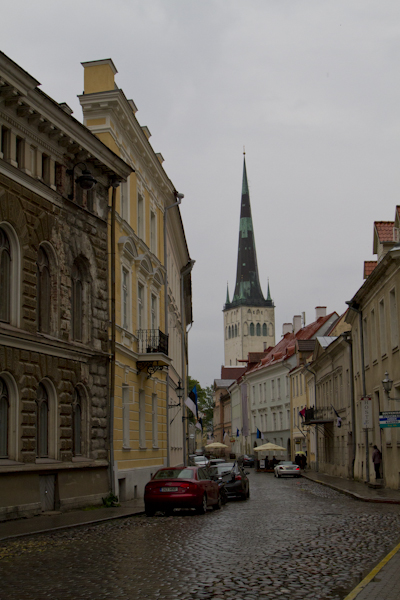
The origins of the city date back to the 13th century, when a castle was built on the site by the invading Teutonic Knights during the Northern Crusades.
But most of the architecture that we identify with “old Tallinn” reflects the heyday of the Hanseatic League (13th to 16th centuries), a mercantile and military alliance of northern German and Baltic cities.
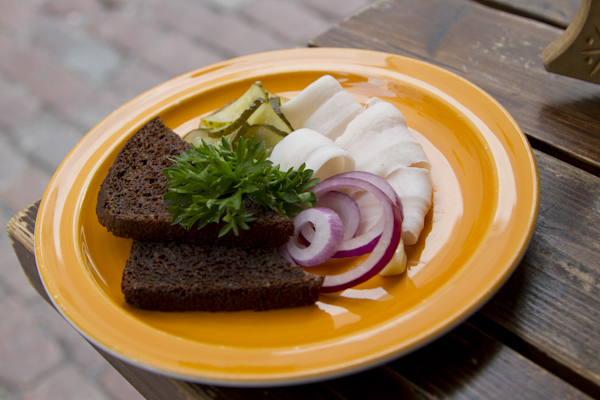
Tallinn occupied a strategic point on the trade crossroads between Northern Europe and Russia. It’s fortifications reflected its importance, with tall walls and 66 defensive towers.
The weather had taken a turn for the sodden when we arrived in the Old Town. All the museums were closed for the Midsummer holiday, and so were the shops.
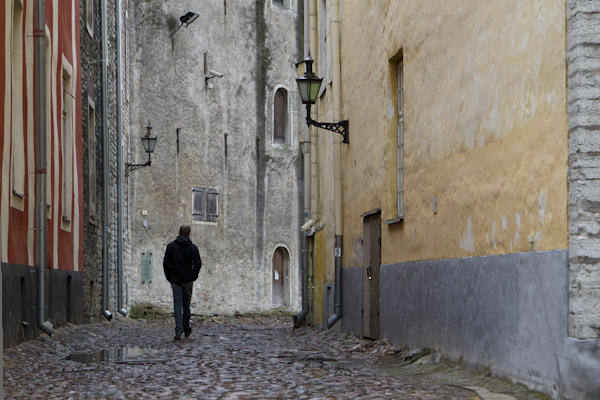
We drank local ales in one of the few open bars, and thus fortified, set out to prowl the gloomy empty night.
What can I say? It was perfect.
Seeing Tallinn in the pissing rain, totally deserted, gave the old town the perfect atmosphere. The cascades of water took the stone walls back a couple centuries. And without all those tourists, my mind was free to resurrect the city’s ghosts.
I squinted at the towers through the lashing rain and felt the forlorn loneliness of a soldier on watch. I expected to hear swords banging on shields as barbarians approached the gardens beyond the walls. And I nearly gave the order to bar the gates.
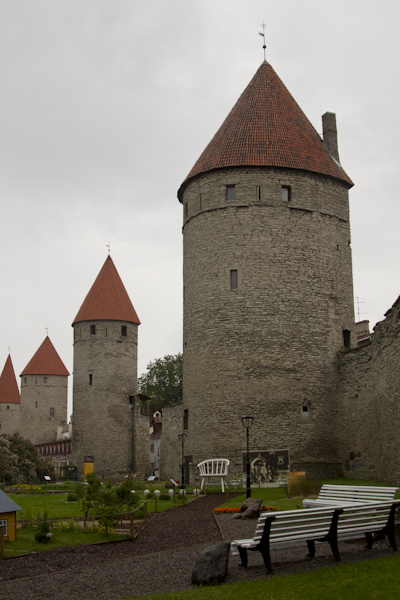
Tallinn is a great place to get in touch with Medieval history. But it can also be a very busy town. If cruise ship tourists and city life are getting you down, magical mist-shrouded forests are just a short drive away.
Lahemaa translates to “Land of Bays.” It’s Estonia’s largest national park. And it was actually the first national park in the Soviet Union, founded in 1971 (Soviet Russia didn’t have one until 1983).
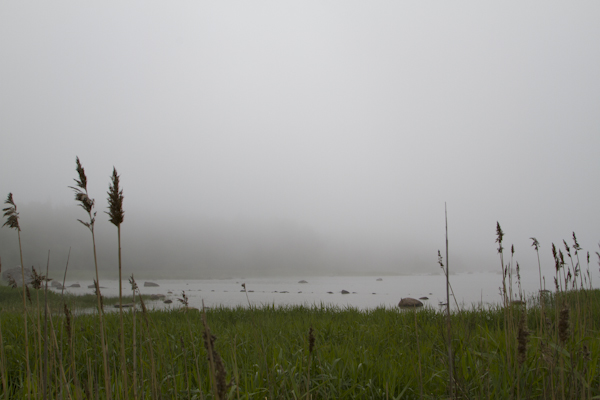
It’s a place of flat, gently rolling landscapes, forests and hamlets, and single dwellings in the woods. And like so much of nearby Latvia, the summer manor houses of the old landowning class also dot the region.
We chose a fine sunny day to drive up the deeply indented coast to Käsmu — a stone field with the largest number of erratic boulders in Estonia. These big rocks were all brought from Scandinavia by glacial action. And I’m told they’re a wonder to behold. But a thick sea fog had rolled in, and we could hardly see a thing.

The landscape-swallowing mist wasn’t cause for despair, however, because Lahemaa holds other crazy and unexpected secrets. One of them is the Viinistu Art Museum.
Lost at the end of a remote peninsula, this little fishing harbour houses the enormous private collection of Jaan Manitski.
Manitski was born in Viinistu, but left as a baby, and made his fortune managing the Swedish band ABBA. He set up this eccentric museum in his home town to bring a little art to a very remote place.
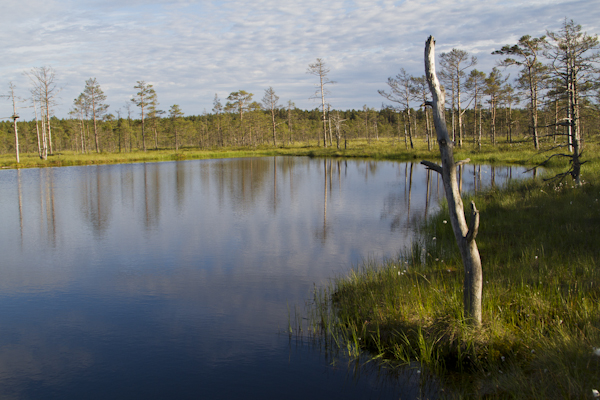
There were around 300 pieces of art, all from Estonian artists, both traditional and modern. The rooms just went on and on, with addition after sprawling addition, and no map to give us a clue to just how much there was to discover.
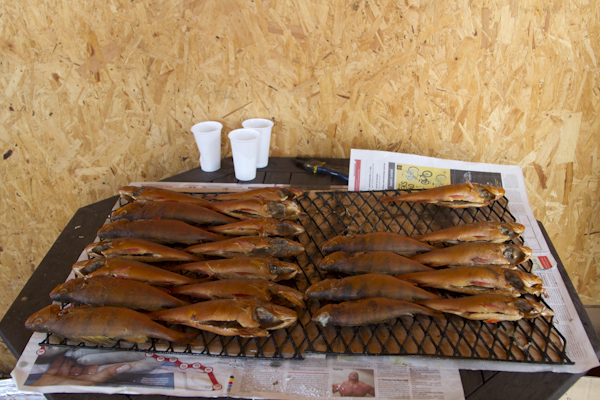
And when we’d filled our heads with swirling lines and colours, we bought a smoked fish and beer in plastic cups from a nearby stall, and sat outside on the dock eating with our fingers.
The mist swirled in and obscured the jetty. But that was okay, because the art in our heads merged with the muffled clang of buoy bells and a distant fog horn, and gave the place a mysterious atmosphere all its own.

Photos ©Tomoko Goto 2015

Get your FREE Guide to Creating Unique Travel Experiences today! And get out there and live your dreams...
